Introduction
Fleak AI Workflow Builder is tailored for creating intelligent data APIs effortlessly. It enables users to quickly develop and deploy API backends with a single click. Leveraging a low-code workflow builder, It simplifies request payload manipulation using SQL, integrates seamlessly with LLM or embedding models, and supports invoking AWS Lambda functions.
Fleak excels in handling parallelization and concurrency, automatically optimizing performance for high throughput across all nodes. This ensures scalable and reliable API deployment without requiring users to manage multithreading or load balancing. Outputs can be delivered directly via synchronous HTTP responses or forwarded to third-party data storage systems like Snowflake and Pinecone, making Fleak production-ready for enterprise applications.
If you need additional help, or think there is something we've missed in the documentation, please contact us at support@fleak.ai
Key Concepts
Workflow
A workflow is the complete process a user creates to transform input into the desired output by connecting various processing "nodes" in a sequence. A Fleak workflow receives input from an HTTP API endpoint and returns output either back to the HTTP endpoint as a response or writes it into a user-defined storage solution.
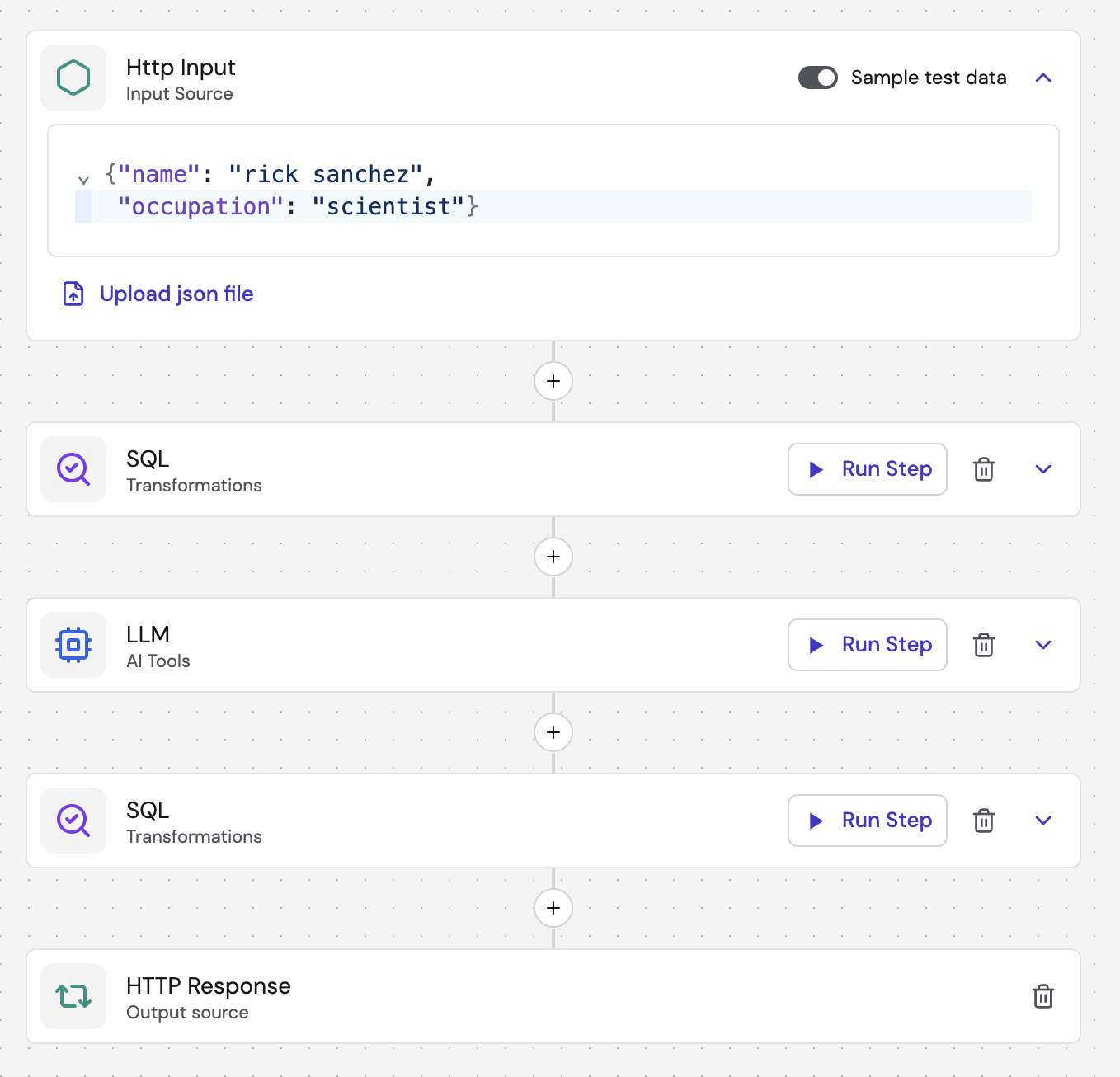
Node
A node on Fleak is a processing module that you can mix and match to build your ideal workflow. The workflow builder currently offer nodes for FleakSQL (see supported SQL syntax), popular LLMs, embedding models, Pinecone lookups, and more. Refer to Fleak Nodes for the latest nodes available.
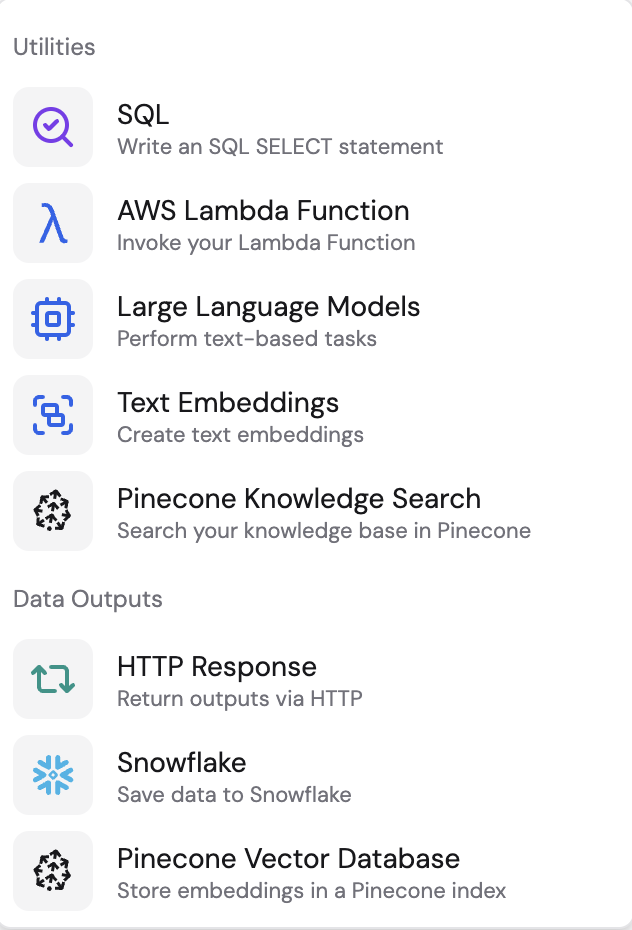
Events
In a Fleak workflow, events is a reserved term that always refers to the output of the previous node. Each node takes
the "events" from the preceding node as its input, allowing you to consistently refer to this input as "events" when
configuring the current node
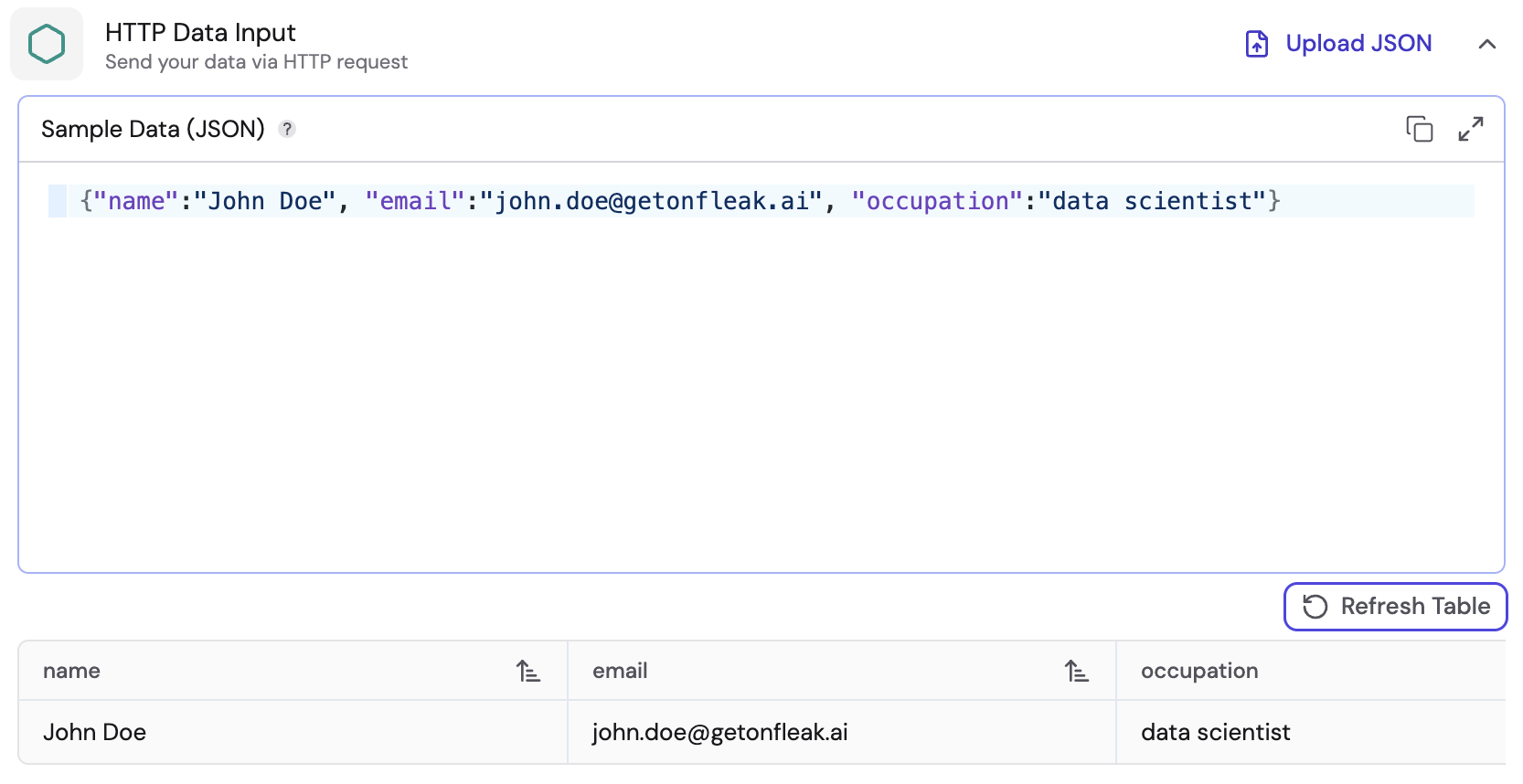

To explain the concept of events further: A user can input multiple "events" as sample data and view them in either
JSON format or TABULAR format. In the TABULAR view, Fleak interprets the top-level JSON keys as column names and their
corresponding values as row values. See example below:
[
{
"name": "Rick Sanchez",
"family": {
"wife": "Diane Sanchez",
"daughter": "Beth Smith",
"grandson": "Morty Smith"
}
},
{
"name": "Morty Smith",
"family": {
"father": "Jerry Smith",
"mother": "Beth Smith",
"grandfather": "Rick Sanchez"
}
}
]
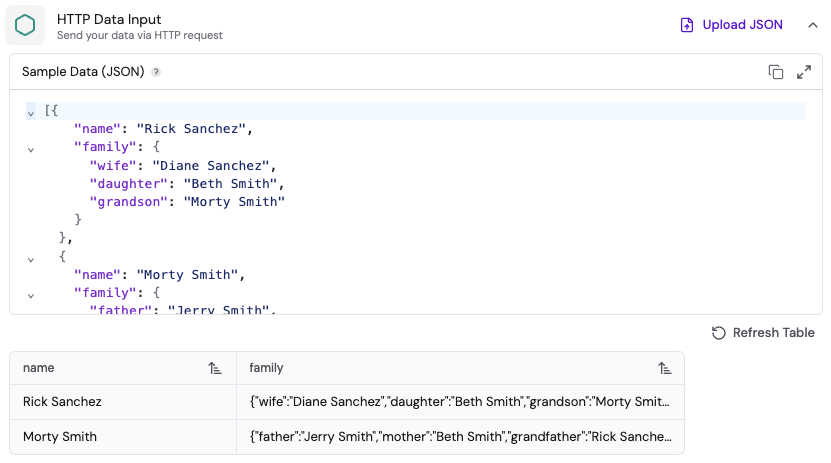
For querying nested JSON keys within the "family" column from this input 'events', use SQL JSON operators to specify the path.
select family->'mother' as mother from events;
The results are as follow:
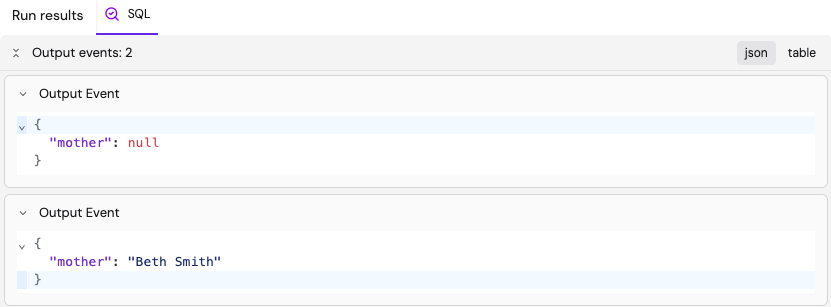
The 'family' JSON object of Rick Sanchez does not contain the key 'mother', hence the value is null.
The 'family' JSON object of Morty Smith contains the key 'mother' with the value "Beth Smith".